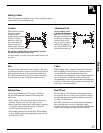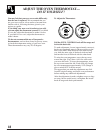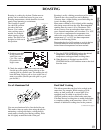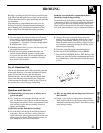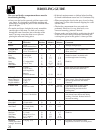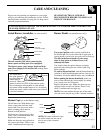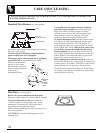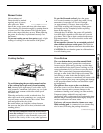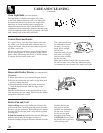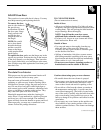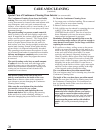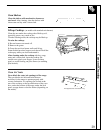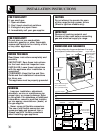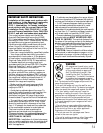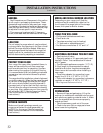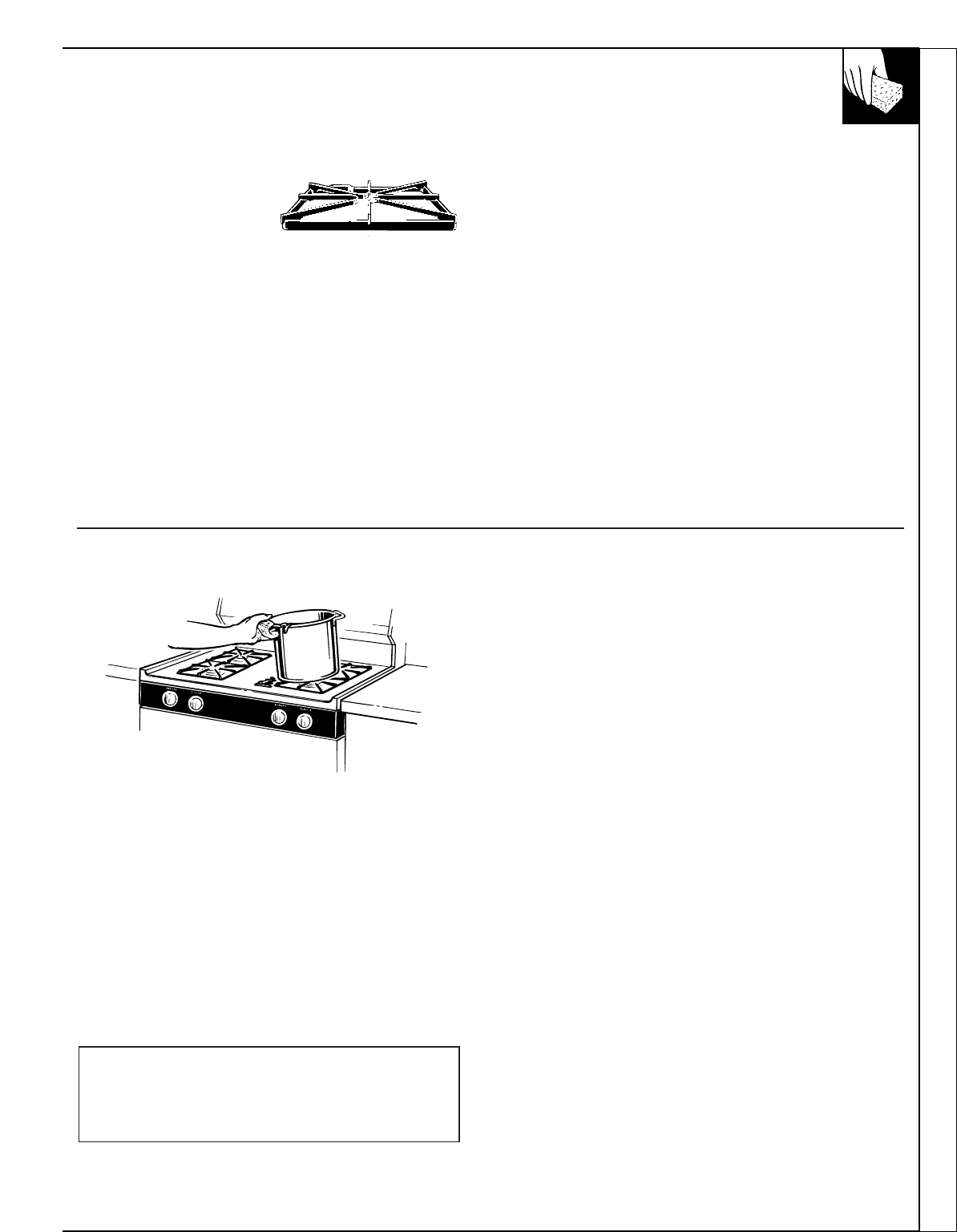
Care and Cleaning
Burner Grates
Lift out when cool.
Grates should be washed
regularly and, of course,
after spillovers. Wash
them in hot, soapy water and rinse with clean water.
After cleaning, dry them thoroughly by putting them in
a warm oven for a few minutes. Don’t put the grates
back on the range while they are wet. When replacing
the grates, be sure they’re positioned securely over
the burners.
To prevent rusting on cast iron grates, apply a light
coating of cooking oil on the bottom of the grates.
To get rid of burned-on food, place the grates
in a covered container (or plastic bag) with 1/4 cup
ammonia to loosen the soil. Let sit overnight
(or approximately 12 hours), then scrub with a
soap-filled scouring pad if necessary. Rinse grates
thoroughly and dry completely before replacing
them on the range top.
Although they’re durable, the grates will gradually
lose their shine, regardless of the best care you can
give them. This is due to their continual exposure to
high temperatures. You will notice this sooner with
lighter color grates.
Do not operate a burner for an extended period of
time without cookware on the grate.
The finish on
the grate may chip without cookware to absorb the heat.
CAUTION: Do not clean the grates in a dishwasher or
in a self-cleaning oven.
To avoid damaging the porcelain enamel surface
of the cooktop and to prevent it from becoming
dull, clean up spills right away. Foods with a lot of
acid (tomatoes, sauerkraut, fruit juices, etc.) or foods
with high sugar content could cause a dull spot if
allowed to set.
When the surface has cooled, wash and rinse. For
other spills such as fat spatterings, etc., wash with
soap and water once the surface has cooled. Then
rinse and polish with a dry cloth.
Be careful when you clean the cooktop because
the area over the pilot will be hot (on models with
standing pilots).
The oven bottom has a porcelain enamel finish.
To make cleaning easier, protect the oven bottom
from excessive spillovers by placing a cookie sheet
on the shelf below the shelf you are cooking on. You
can use aluminum foil if you do not cover the whole
shelf. This is particularly important when baking a
fruit pie or other foods with a high acid content. Hot
fruit fillings or other foods that are highly acidic
(such as milk, tomatoes or sauerkraut, and sauces with
vinegar or lemon juice) may cause pitting and damage
to the porcelain enamel surface and should be wiped
up immediately.
If a spillover does occur on the oven bottom,
allow the oven to cool first. Remove the oven bottom
for easier clean-up and to prevent damage to the
continuous cleaning oven coating (on some models).
Frequent wipings with mild soap and water
(particularly after cooking meat) will prolong the time
between major cleanings. Rinse thoroughly. Soap left
on the oven bottom can cause stains.
For heavy soil, use an abrasive cleaner or a soap-
filled scouring pad. A commercial oven cleaner may
also be used, following the package directions.
(continued next page)
Do not store flammable materials in an oven or
near the cooktop. Do not store or use combustible
materials, gasoline or other flammable vapors and
liquids in the vicinity of this or any other appliance.
Cooktop Surface Oven Bottom
25



